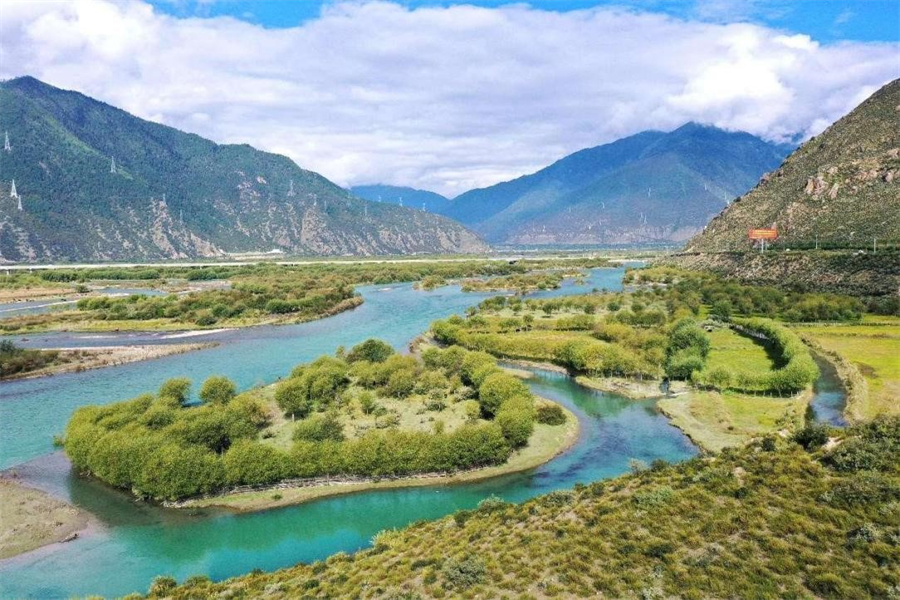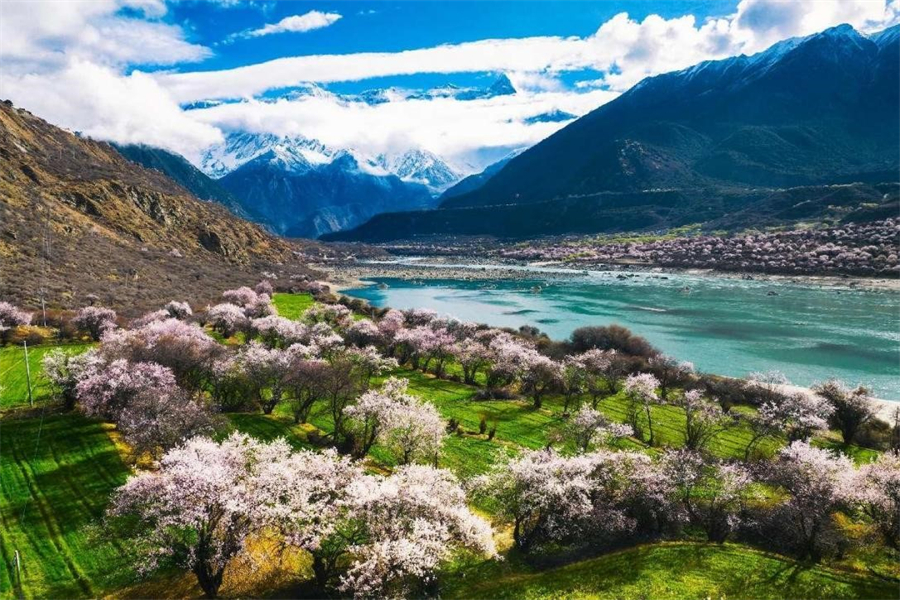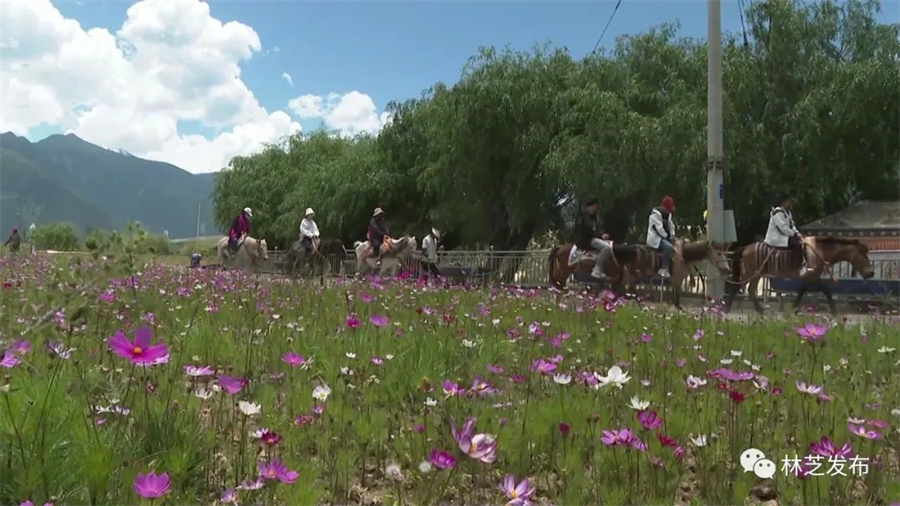Nyingchi's efforts in wetland conservation

Photo shows a splendid view of the Yani national wetland park in Nyingchi, southwest China's Xizang autonomous region. [People's Daily Online/Yang Suping]
Less than an hour's drive from downtown Nyingchi, southwest China's Xizang autonomous region, there lies the Yani national wetland park, where the Yarlung Zangbo River and its tributary Nyang River converge.
In recent years, the ecological environment in the wetland has been continuously improved thanks to protection, restoration, and monitoring efforts, making the park a prominent attraction for tourism and a signature of Nyingchi's ecological development.
At 8:00 a.m., Phurbu Doje, a villager from Nyingchi, arrived at the forest to begin his daily inspection of the trees. As he carefully examined each one, he explained to People's Daily the importance of monitoring for diseases or pests that could threaten these rare and valuable species.
Phurbu Doje is one of the 45 forest rangers in the Yani national wetland park. As a native, he has a passion for this land.
When he was a child, it was just an inconspicuous wasteland. In 2009, Yani national wetland park became a pilot project, and the former gravel factory there was shut down. Vegetation started to grow on the mudflats.
"The changes over the past more than a decade years have not come easily, so we must protect this place even better," Phurbu Doje said.
A village in a corner of the Yani national wetland park was once ecologically fragile and threatened by sandstorms. Located on flat land and at a bend of a river, the village struggled with severe siltation issues for years.

Photo taken on March 23, 2023 shows beautiful peach blossoms along the Yarlung Zangbo River in Nyingchi, southwest China's Xizang autonomous region. [People's Daily Online/Li Yanzhao]
Fifteen years ago, the river would often flood its banks in summer, blanketing them in silt, and then run completely dry in winter, allowing winds to whip up sediment from the exposed riverbed.
"We need to plant trees in our village!" In the spring of 2009, the Party head of the village proposed the idea of tree planting and environmental improvement. This marked the beginning of an afforestation project that has continued to this day.
Over the past more than a decade, the village has planted hundreds of thousands of trees, resulting in significant sand control and afforestation effects.
"Seeing the beautiful environment of my hometown now, I feel that the efforts of these years are worthwhile," the Party head said.
In the Yani national wetland park, there are many similar ecological restoration projects. Since 2016, Nyingchi has invested a total of 35.1 million yuan ($4.89 million) in four wetland conservation and restoration projects. As of June 2022, 1,839 mu (122.6 hectares) of vegetation has been restored in the wetland park.
With the continuous improvement of the ecological environment, how can the beautiful wetland scenery be further utilized to create greater value?
Tashi Tsering, a charter car driver in Nyingchi, has been particularly busy in the past few months.
"During the peak season of tourism in Xizang, scenic areas such as the Yani national wetland park and the Yarlung Zangbo Grand Canyon form a 'golden route' for short trips around Nyingchi," Tashi Tsering told People's Daily. According to him, who lives near the wetland, many people in his village work in nearby attractions, and a significant portion of their income comes directly from scenic areas.
Last year, more than 190 mu of land in a village near the wetland park was contracted, on which a garden that combines ecological sightseeing and folk experiencing activities was built, where visitors can enjoy the flowers, archery and horse riding. Today, the village has become an important tourism destination for residents and tourists, and the income of villagers has been significantly improved.

Tourists ride horses and enjoy flowers in Nyingchi, southwest China's Xizang autonomous region. [Photo from the official account of the Nyingchi Radio and TV Station on WeChat]
In addition, Nyingchi is vigorously strengthening the monitoring and research on wetlands to maximize their ecological value.
"The wetland park is rich in flora and fauna, with 534 species from 87 families of higher plants, including 6 species of wild plants under national key protection. The wetland park and its surrounding areas are home to 234 species from 59 families of wild animals. The ecological value and scientific significance of these species need to be further developed and utilized," said an official with the forestry and grassland bureau of Nyingchi.
Previously, due to a lack of wetland conservation professionals, the ecological service functions of the Yani national wetland park were not effectively utilized.
To address this issue, the local forestry and grassland bureau has collaborated with research institutions such as the Chinese Academy of Sciences and Wuhan University to improve the wetland resource investigation and monitoring system and establish a sound technological support mechanism for wetland conservation. Additionally, wetland ecological monitoring stations have been constructed to conduct assessments of wetland ecological conditions and monitor the flora and fauna.
"Establishing a comprehensive ecological monitoring network will facilitate further research on the plateau ecosystem and, in turn, help protect the plateau's ecological environment," said Dawa, an associate researcher with an institute of plateau biology in the autonomous region.
























